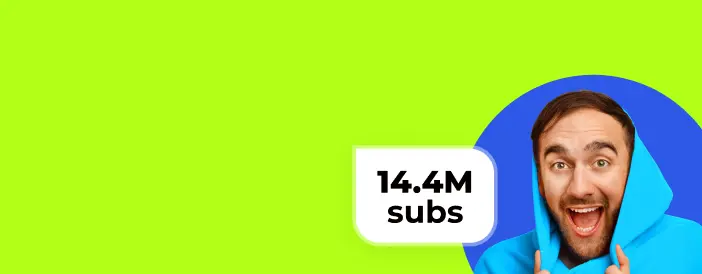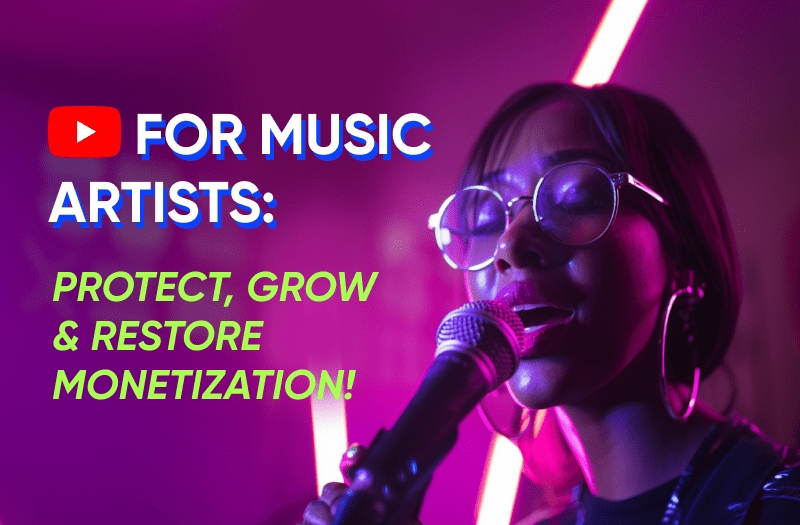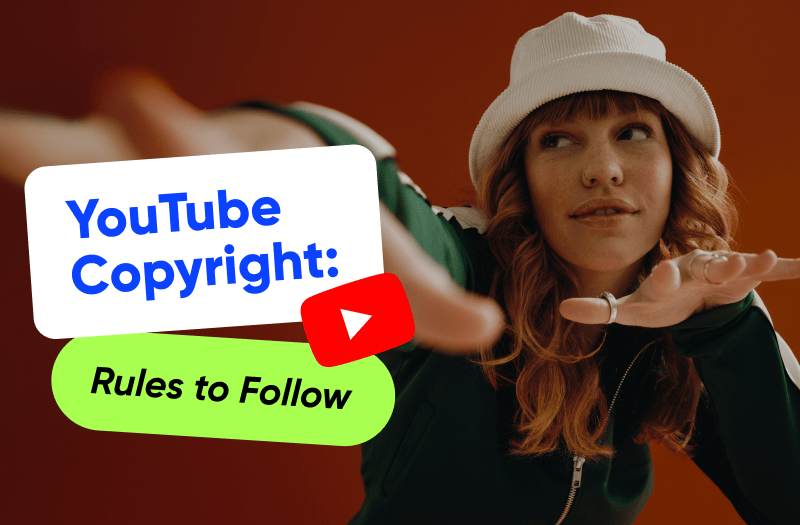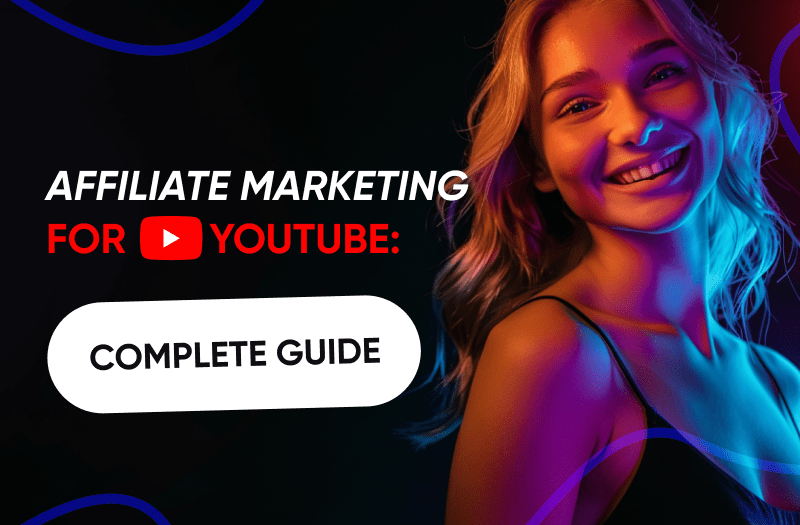
In this article, we will share critical information about how artists promote their music on YouTube, so that you can immediately start working towards your goals on YouTube.
Why Can Music Channels Lose Monetization?
The key reasons for demonetization of music channels boil down to reused content and repetitious content among other issues. Essentially, if you're uploading videos that heavily lean on content that's not originally yours, or if you're recycling the same clips across various uploads, YouTube might pull the plug on your monetization.
Even when you’re uploading your own music, YouTube's system might mistakenly flag it as someone else’s tune. When that happens, you’ll need to step up and prove you're the real maestro behind the track.
To dodge these false alarms, you’ve got a couple of moves you can make. First, make sure your rights are set up tight and right from the get-go. Second, if YouTube does hit you with monetization issues, address them head-on. Luckily, you don’t have to face it alone. With AIR Media-Tech on your side, you’re working with YouTube Certified partners who’ve helped thousands of creators straighten out these kinds of mix-ups. Drop us a line to keep your channel in tune and your monetization smooth with help from experts.
Then there's the tricky part about song compilations. Even if you've got all the legal rights to use the tracks, YouTube might still see this as a no-go if compilations dominate your channel. Even if you're doing it legally, it may not bring enough originality to the table for YouTube’s liking.
So, YouTube’s pushing for creativity and freshness. That’s why they tighten up rules, making sure viewers get quality content, which in turn keeps the advertisers happy and the ecosystem balanced. If you want to keep the monetization lights on, think original, stay fresh, and keep a clear line of communication with YouTube’s guidelines.
How to Prevent Demonetization for Music Channels?
YouTube can be a bit of a maze when it comes to their rules that are always evolving, and stepping wrong can mean losing monetization. Staying original is your number one defense against demonetization. YouTube loves fresh and original content. So, whether you're dropping a new track or covering an old classic, make sure there's enough of your unique spin on it to stand out. Uniqueness is undeniably a good thing on YouTube but there is more you can do to keep making money on this platform.
Use YouTube Content ID System
Content ID is pretty much a must-do for music channels to protect your tunes and keep your revenue flowing. Here’s the lowdown on using the YouTube Content ID system.
First up, what is Content ID? It’s YouTube’s system that helps copyright owners manage their digital rights automatically. When you upload your music, Content ID scans all YouTube videos to see if your content is being used anywhere else. If it finds a match, it lets you know and takes action based on your preferences — like blocking the video, monetizing it, or simply keeping track of its metrics.
Now, how do you use it? You’ll need to submit an application to YouTube to access Content ID. This involves proving that you own exclusive rights to a substantial amount of original content. You can also just contact us, and we'll handle getting your music into YouTube's Content ID system. We'll manage everything for you, so you won't have to worry about a thing.
Once you're in, upload your tracks to the Content ID database, so YouTube knows what to look out for in other people's videos. When there's a match, Content ID kicks in with the options you've set. You can choose to monetize the video by running ads on it, which means you earn money whenever someone watches. Or, if you’re not into sharing, you can have the video taken down to keep things exclusive. Learn more about how content ID can protect your rights and help you with keeping monetization intact in this article.
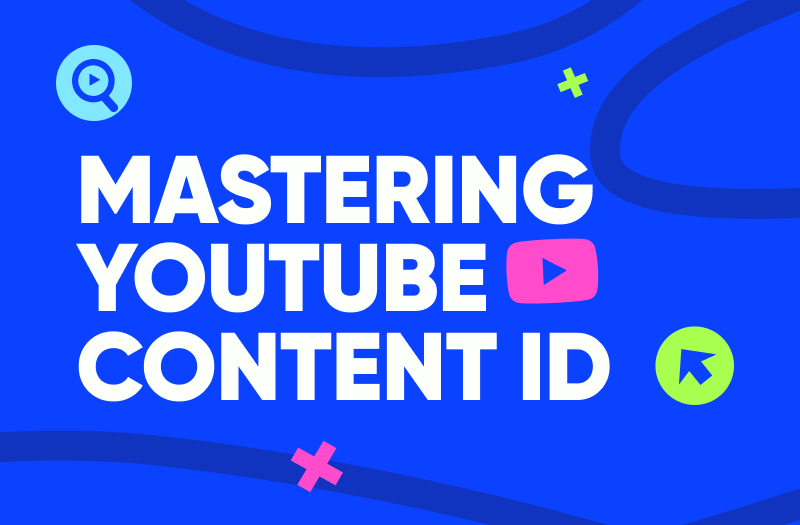
Do Regular Audits and YouTube Channel Moderation for Compliance
To make sure your channel stays in the clear and avoids any compliance hiccups, it's super important to get into the habit of regularly auditing and moderating your content. Here’s how you can keep everything on track.
First, make it a routine to review your existing and new videos against the latest YouTube guidelines. You know how sometimes what was okay last month isn’t okay this month? Exactly. That’s why staying updated with YouTube's policy changes is crucial. During your audits, check out things like your video descriptions, tags, and the content itself. Make sure you’re not accidentally stepping over any new lines YouTube has drawn. Also, keep an eye on how your content is performing in terms of viewer engagement and feedback. Sometimes, your audience’s reactions can give you early signals if something might be amiss.
Here is a set of rules you may need to get familiar with, if not already:
- YouTube Community Guidelines & Policies
- Terms of Service
- YouTube Copyright & Fair Use Policies
- AdSense Program policies
All this might sound like a lot. To save you from the headache and let you focus more on creating awesome music, consider teaming up with AIR Media-Tech. Our experts can handle all the automated moderation for you. We keep tabs on the rules, scan your content, and make sure everything’s in tune before any issues can pop up. You can check out this article to learn more about content moderation.
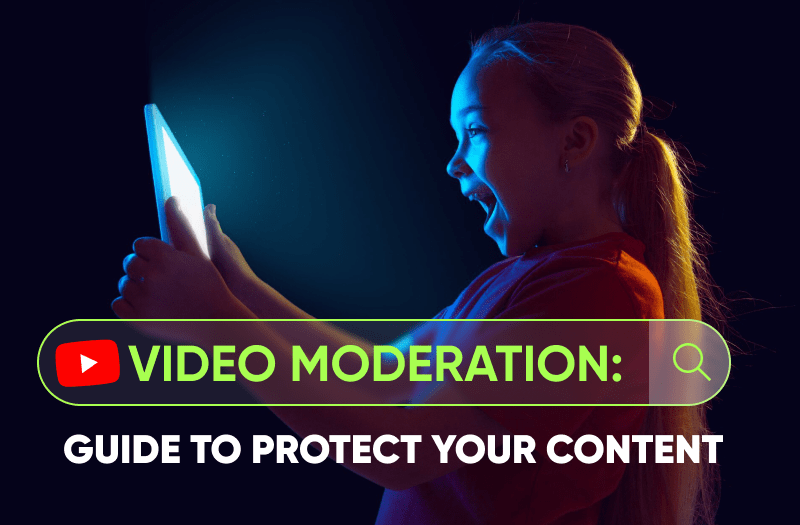
How to Restore Monetization on a Music Channel?
Getting back on track and restoring your monetization can feel daunting but it is manageable. Here’s a breakdown of steps to help you bounce back and keep making money on your music channel.
Step 1: Figure Out Why
You need to understand why YouTube pulled the plug on your monetization. Check your email or YouTube Studio; YouTube typically sends a notification explaining what’s up. It could be due to copyright issues, community guideline strikes, or other policy violations. Knowing exactly why will guide your next steps.
Step 2: Fix the Issues
Once you pinpoint the problem, it's time to fix it. If it’s a copyright issue, make sure you have the rights to all the content in your videos, or adjust your content to fall under fair use. For guideline violations, review your content against YouTube’s latest rules and make the necessary changes, whether that means editing your videos or even taking some down.
Step 3: Submit for Review
After you’ve made the necessary adjustments, you can ask YouTube to take another look. This usually involves filling out a form or clicking a ‘request review’ button in YouTube Studio. Make sure your channel complies with all YouTube monetization policies before you hit that submit button.
Step 4: Stay Patient and Follow Up
The review process can take some time, so a little patience goes a long way. Keep an eye on your email and YouTube Studio for any updates.
Step 5: Join AIR Media-Tech
To avoid future headaches and ensure your channel stays in compliance, join AIR Media-Tech. We specialize in managing the tricky waters of YouTube’s policies with automated moderation tools and we can address any issue directly with the YouTube team on your behalf. Our experts can help keep your channel in good standing, letting you focus on creating great music without the worry of policy pitfalls.
How to Make More Money as a Music Artist?
If you're looking to turn up the volume on your earnings both on YouTube and beyond, we’ve got some tips to help you cash in on your music. Here’s how you can amplify your music revenue and get your sound heard far and wide.
1. Run 24/7 Live Streams
Hosting a 24/7 livestream of pre-recorded videos is often a good idea for music channels, especially those that create vibes like lounge music, ambient tracks, or instrumental playlists.
24/7 live streams are pretty much like setting up your own music radio station on YouTube. You create a playlist of your pre-recorded videos and let them roll live, around the clock. It’s an awesome way to keep your audience engaged, boost watch-time and revenue, even when you’re not actively uploading new content. You can easily set up continuous streams with tools like Gyre. You can also text us to help with launching and managing your streams.
2. Leverage Alternative Monetization on YouTube
Beyond ad revenue, tap into YouTube's other monetization features like Super Chat and Channel Memberships during your live streams. These features let your viewers financially support you during live streams or through monthly subscriptions in exchange for exclusive perks. It’s a way to deepen fan engagement while boosting your earnings.
3. Promote Your Music on YouTube
Promoting your YouTube videos isn't just about getting a few extra likes — it's about reaching the people who'll vibe with your music, ramping up your views, and growing your channel. Plus, more views mean more revenue potential. Professional promotion strategies can bring music artists hundreds of thousands and even millions of views just like it already did for our partners. You can request a promotion campaign for your music here to boost your numbers and bring you closer to your fans.
4. Go Beyond YouTube with Music Distribution
Don’t stop at YouTube. Expand your reach by distributing your music across multiple platforms. Distribution services like AIR Music by AIR Media-Tech can push your music to over 100 platforms and online stores like Apple Music, Spotify, YouTube Music, and Deezer, to name a few. With AIR Music, you also gain access to detailed data analytics and promotional tools while maintaining full ownership of your music rights. You can request a consultation here to learn more.
5. Merchandise
Got a logo? A catchy lyric? Consider creating merchandise. This can be a way to make extra income and let fans wear their support on their sleeves — literally. Luckily, YouTube presents a convenient option to implement this strategy via a Merchandise Shelf feature that allows you to sell branded merchandise directly under your videos.
Implementing these strategies can help keep your channel’s monetization in good health and diversify your income streams, letting you focus on what you do best — creating music that resonates with your audience. Stay creative, stay informed, and rock on!
